Can’t Nobody Tell Me Nothin: Respectability and The Produced Voice in Lil Nas X’s “Old Town Road”
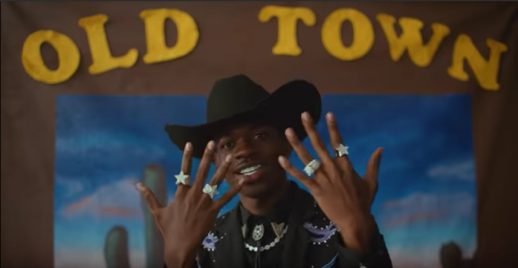
It’s been ten weeks now that we’ve all been kicking back in our Wranglers. allowing Lil Nas X’s infectious twang in “Old Town Road” to shower us in yeehaw goodness from its perch atop the Billboard Hot 100. Entrenched as it is on the pop chart, though, “Old Town Road”’s relationship to Billboard got off to a shaky start, first landing on the Hot Country Songs list only to be removed when the publication determined the hit “does not embrace enough elements of today’s country music to chart in its current version.” There’s a lot to unpack in a statement like that, and folks have been unpacking it quite consistently, especially in relation to notions of genre and race (in addition to Matthew Morrison’s recommended reads, I’d add Karl Hagstrom-Miller’s Segregating Sound, which traces the roots of segregated music markets). Using the context of that ongoing discussion about genre and race, I’m listening here to a specific moment in “Old Town Road”— the line “can’t nobody tell me nothin”—and the way it changes from the original version to the Billy Ray Cyrus remix. Lil Nas X uses the sound of his voice in this moment to savvily leverage his collaboration with a country music icon, and by doing so subtly drawing out the respectability politics underlying Billboard’s racialized genre categorization of his song.
After each of Lil Nas X’s two verses in the original “Old Town Road,” we hear the refrain “can’t nobody tell me nothin.” The song’s texture is fairly sparse throughout, but the refrains feature some added elements. The 808-style kick drum and rattling hihats continue to dominate the soundscape, but they yield just enough room for the banjo sample to come through more clearly than in the verse, and it plucks out a double-time rhythm in the refrain. The vocals change, too, as Lil Nas X performs a call-and-response with himself. The call, “can’t nobody tell me nothin,” is center channel, just as his voice has been throughout the verse, but the response, “can’t tell me nothin,” moves into the left and right speaker, a chorus of Lil Nas X answering the call. Listen closely to these vocals, and you’ll also hear some pitch correction. Colloquially known as “autotune,” this is an effect purposely pushed to extreme limits to produce garbled or robotic vocals and is a technique most often associated with contemporary hip hop and R&B. Here, it’s applied to this melodic refrain, most noticeably on “nothin” in the call and “can’t” in the response,
After Billboard removed the song from the Hot Country chart in late March, country star Billy Ray Cyrus tweeted his support for “Old Town Road,” and by early April, Lil Nas X had pulled him onto the remix that would come to dominate the Hot 100. The Cyrus remix is straightforward: Cyrus takes the opening chorus, then Lil Nas X’s original version plays through from the first verse to the last chorus, at which point Cyrus tacks on one more verse and then sings the hook in tandem with Lil Nas X to close the song. Well, it’s straightforward except that, while Lil Nas X’s material sounds otherwise unaltered from the original version, the pitch correction is smoothed out so that the garble from the previous version is gone.
In order to figure out what happened to the pitch correction from the first to second “Old Town Road,” I’m bringing in a conceptual framework I’ve been tinkering with the last couple of years: the produced voice. Within this framework, all recorded voices are produced in two specific ways: 1) everyone performs their bodies in relation to gender, race, ability, sex, and class norms, and 2) everyone who sings on record has their voice altered or affected with various levels of technology. To think about a produced voice is to think about how voices are shaped by recording technologies and social technologies at the same time. Listening to the multiple versions of “Old Town Road” draws my attention specifically to the always collaborative nature of produced voices.
In performativity terms—and here Judith Butler’s idea in “Performative Acts and Gender Constitution: An Essay in Phenomenology and Feminist Theory” that “one is not simply a body, but, in some very key sense, one does one’s body” (521) is crucial—a collaboratively produced voice is a little nebulous, as it’s not always clear who I’m collaborating with to produce my voice. Sometimes I can (shamefully, I assure you) recognize myself changing the way my voice sounds to fit into some sort of, say, gendered norm that my surroundings expect. As a white man operating in a white supremacist, cisheteropatriarchal society, the deeper my voice sounds, the more authority adheres to me. (Well, only to a point, but that’s another essay). Whether I consciously or subconsciously make my voice deeper, I am definitely involved in a collaboration, as the frequency of my voice is initiated in my body but dictated outside my body. Who I’m collaborating with is harder to establish – maybe it’s the people in the room, or maybe my produced voice and your listening ears (read Jennifer Stoever’s The Sonic Color Line for more on the listening ear) are all working in collaboration with notions of white masculine authority that have long-since been baked into society by teams of chefs whose names we didn’t record.
In studio production terms, a voice’s collaborators are often hard to name, too, but for different reasons. For most major label releases, we could ask who applied the effects that shaped the solo artist’s voice, and while there’s a specific answer to that question, I’m willing to bet that very few people know for sure. Even where we can track down the engineers, producers, and mix and master artists who worked on any given song, the division of labor is such that probably multiple people (some who aren’t credited anywhere as having worked on the song) adjusted the settings of those vocal effects at some point in the process, masking the details of the collaboration. In the end, we attribute the voice to a singular recording artist because that’s the person who initiated the sound and because the voice circulates in an individualistic, capitalist economy that requires a focal point for our consumption. But my point here is that collaboratively produced voices are messy, with so many actors—social or technological—playing a role in the final outcome that we lose track of all the moving pieces.
Not everyone is comfortable with this mess. For instance, a few years ago long-time David Bowie producer Tony Visconti, while lamenting the role of technology in contemporary studio recordings, mentioned Adele as a singer whose voice may not be as great as it is made to sound on record. Adele responded by requesting that Visconti suck her dick. And though the two seemed at odds with each other, they were being equally disingenuous: Visconti knows that every voice he’s produced has been manipulated in some way, and Adele, too, knows that her voice is run through a variety of effects and algorithms that make her sound as epically Adele as possible. Visconti and Adele align in their desire to sidestep the fundamental collaboration at play in recorded voices, keeping invisible the social and political norms that act on the voice, keeping inaudible the many technologies that shape the voice.
Propping up this Adele-Visconti exchange is a broader relationship between those who benefit from social gender/race scripts and those who benefit from masking technological collaboration. That is, Adele and Visconti both benefit, to varying degrees, from their white femininity and white masculinity, respectively; they fit the molds of race and gender respectability. Similarly, they both benefit from discourses surrounding respectable music and voice performance; they are imbued with singular talent by those discourses. And on the flipside of that relationship, where we find artists who have cultivated a failure to comport with the standards of a respectable singing voice, we’ll also find artists whose bodies don’t benefit from social gender/race scripts: especially Black and Brown artists—non-binary, women, and men. Here I’m using “failure” in the same sense Jack Halberstam does in The Queer Art of Failure, where failing is purposeful, subversive. To fail queerly isn’t to fall short of a standard you’re trying to meet; it’s to fall short of a standard you think is bullshit to begin with. This kind of failure would be a performance of non-conformity that draws attention to the ways that systemic flaws – whether in social codes or technological music collaborations – privilege ways of being and sounding that conform with white feminine and white masculine aesthetic standards. To fail to meet those standards is to call the standards into question.
So, because respectably collaborating a voice into existence involves masking the collaboration, failing to collaborate a voice into existence would involve exposing the process. This would open up the opportunity for us to hear a singer like Ma$e, who always sings and never sings well, as highlighting a part of the collaborative vocal process (namely pitch correction, either through training or processing the voice) by leaving it out. To listen to Ma$e in terms of failed collaboration is to notice which collaborators didn’t do their work. In Princess Nokia’s doubled and tripled and quadrupled voice, spread carefully across the stereo field, we hear a fully exposed collaboration that fails to even attempt to meet any standards of respectable singing voices. In the case of the countless trap artists whose voices come out garbled through the purposeful misapplication of pitch correction algorithms, we can hear the failure of collaboration in the clumsy or over-eager use of the technology. This performed pitch correction failure is the sound I started with, Lil Nas X on the original lines “can’t nobody tell me nothin.” It’s one of the few times we can hear a trap aesthetic in “Old Town Road,” outside of its instrumental.
In each of these instances, the failure to collaborate results in the failure to achieve a respectably produced voice: a voice that can sing on pitch, a voice that can sing on pitch live, a voice that is trained, a voice that is controlled, a voice that requires no intervention to be perceived as “good” or “beautiful” or “capable.” And when respectable vocal collaboration further empowers white femininity or white masculinity, failure to collaborate right can mean failing in a system that was never going to let you pass in the first place. Or failing in a system that applies nebulous genre standards that happen to keep a song fronted by a Black artist off the country charts but allow a remix of the same song to place a white country artist on the hip hop charts.
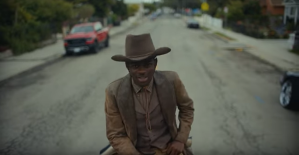 The production shift on “can’t nobody tell me nothin” is subtle, but it brings the relationship between social race/gender scripts and technological musical collaboration into focus a bit. It isn’t hard to read “does not embrace enough elements of today’s country music” as “sounds too Black,” and enough people called bullshit on Billboard that the publication has had to explicitly deny that their decision had anything to do with race. Lil Nas X’s remix with Billy Ray Cyrus puts Billboard in a really tricky rhetorical position, though. Cyrus’s vocals—more pinched and nasally than Lil Nas X’s, with more vibrato on the hook (especially on “road” and “ride”), and framed without the hip hop-style drums for the first half of his verse—draw attention to the country elements already at play in the song and remove a good deal of doubt about whether “Old Town Road” broadly comports with the genre. But for Billboard to place the song back on the Country chart only after white Billy Ray Cyrus joined the show? Doing so would only intensify the belief that Billboard’s original decision was racially motivated. In order for Billboard to maintain its own colorblind respectability in this matter, in order to keep their name from being at the center of a controversy about race and genre, in order to avoid being the publication believed to still be divvying up genres primarily based on race in 2019, Billboard’s best move is to not move. Even when everyone else in the world knows “Old Town Road” is, among other things, a country song, Billboard’s country charts will chug along as if in a parallel universe where the song never existed.
The production shift on “can’t nobody tell me nothin” is subtle, but it brings the relationship between social race/gender scripts and technological musical collaboration into focus a bit. It isn’t hard to read “does not embrace enough elements of today’s country music” as “sounds too Black,” and enough people called bullshit on Billboard that the publication has had to explicitly deny that their decision had anything to do with race. Lil Nas X’s remix with Billy Ray Cyrus puts Billboard in a really tricky rhetorical position, though. Cyrus’s vocals—more pinched and nasally than Lil Nas X’s, with more vibrato on the hook (especially on “road” and “ride”), and framed without the hip hop-style drums for the first half of his verse—draw attention to the country elements already at play in the song and remove a good deal of doubt about whether “Old Town Road” broadly comports with the genre. But for Billboard to place the song back on the Country chart only after white Billy Ray Cyrus joined the show? Doing so would only intensify the belief that Billboard’s original decision was racially motivated. In order for Billboard to maintain its own colorblind respectability in this matter, in order to keep their name from being at the center of a controversy about race and genre, in order to avoid being the publication believed to still be divvying up genres primarily based on race in 2019, Billboard’s best move is to not move. Even when everyone else in the world knows “Old Town Road” is, among other things, a country song, Billboard’s country charts will chug along as if in a parallel universe where the song never existed.
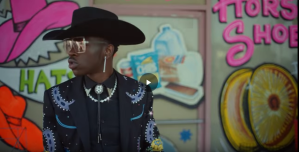 As Lil Nas X shifted Billboard into a rhetorical checkmate with the release of the Billy Ray Cyrus remix, he also shifted his voice into a more respectable rendition of “can’t nobody tell me nothin,” removing the extreme application of pitch correction effects. This seems the opposite of what we might expect. The Billy Ray Cyrus remix is defiant, thumbing its nose at Billboard for not recognizing the countryness of the tune to begin with. Why, in a defiant moment, would Lil Nas X become more respectable in his vocal production? I hear the smoothed-out remix vocals as a palimpsest, a writing-over that, in the traces of its editing, points to the fact that something has been changed, therefore never fully erasing the original’s over-affected refrain. These more respectable vocals seem to comport with Billboard’s expectations for what a country song should be, showing up in more acceptable garb to request admittance to the country chart, even as the new vocals smuggle in the memory of the original’s more roboticized lines.
As Lil Nas X shifted Billboard into a rhetorical checkmate with the release of the Billy Ray Cyrus remix, he also shifted his voice into a more respectable rendition of “can’t nobody tell me nothin,” removing the extreme application of pitch correction effects. This seems the opposite of what we might expect. The Billy Ray Cyrus remix is defiant, thumbing its nose at Billboard for not recognizing the countryness of the tune to begin with. Why, in a defiant moment, would Lil Nas X become more respectable in his vocal production? I hear the smoothed-out remix vocals as a palimpsest, a writing-over that, in the traces of its editing, points to the fact that something has been changed, therefore never fully erasing the original’s over-affected refrain. These more respectable vocals seem to comport with Billboard’s expectations for what a country song should be, showing up in more acceptable garb to request admittance to the country chart, even as the new vocals smuggle in the memory of the original’s more roboticized lines.
While the original vocals failed to achieve respectability by exposing the recording technologies of collaboration, the remix vocals fail to achieve respectability by exposing the social technologies of collaboration, feigning compliance and daring its arbiter to fail it all the same. The change in “Old Town Road”’s vocals from original to remix, then, stacks collaborative exposures on top of one another as Lil Nas X reminds the industry gatekeepers that can’t nobody tell him nothin, indeed.
_
Featured image, and all images in this post: screenshots from “Lil Nas X – Old Town Road (Official Movie) ft. Billy Ray Cyrus” posted by YouTube user Lil Nas X
_
Justin aDams Burton is Assistant Professor of Music at Rider University. His research revolves around critical race and gender theory in hip hop and pop, and his book, Posthuman Rap, is available now. He is also co-editing the forthcoming (2018) Oxford Handbook of Hip Hop Music Studies. You can catch him at justindburton.com and on Twitter @j_adams_burton. His favorite rapper is one or two of the Fat Boys.
_
 REWIND! . . .If you liked this post, you may also dig:
REWIND! . . .If you liked this post, you may also dig:
Vocal Anguish, Disinformation, and the Politics of Eurovision 2016-Maria Sonevytsky
Cardi B: Bringing the Cold and Sexy to Hip Hop-Ashley Luthers
“To Unprotect and Subserve”: King Britt Samples the Sonic Archive of Police Violence-Alex Werth
“Playing the Medieval Lyric”: Remixing, Sampling and Remediating “Head Like a Hole” and “Call Me Maybe”

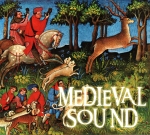
Each of the essays in this month’s “Medieval Sound” forum focuses on sound as it, according to Steve Goodman’s essay “The Ontology of Vibrational Force,” in The Sound Studies Reader, “comes to the rescue of thought rather than the inverse, forcing it to vibrate, loosening up its organized or petrified body (70). These investigations into medieval sound lend themselves to a variety of presentation methods loosening up the “petrified body” of academic presentation. Each essay challenges concepts of how to hear the Middle Ages and how the sounds of the Middle Ages continue to echo in our own soundscapes.
The posts in this series begins an ongoing conversation about medieval sound in Sounding Out!. Our opening gambit in April 2016, “Multimodality and Lyric Sound,” reframes how we consider the lyric from England to Spain, from the twelfth through the sixteenth centuries, pushing ideas of openness, flexibility, and productive creativity. We will post several follow-ups throughout the rest of 2016 focusing on “Remediating Medieval Sound.” And, HEAR YE!, in April 2017, look for a second series on Aural Ecologies of noise! –Guest Editors Dorothy Kim and Christopher Roman
–
In 2013, a user named pomDeter posted a sound file on the social news and entertainment site Reddit that went viral in the form of YouTube videos, Facebook posts, and tweets: a mashup remediation of Nine Inch Nails’s “Head Like a Hole” with Carly Rae Jepsen’s “Call Me Maybe.” Reactions ranged from outrage on the part of Nine Inch Nails’s drummer to declarations that it is a work of “genius” by the Los Angeles Times.
To understand the significance of this surprising piece of pop culture, we should recall that the iconic industrial rock anthem with sadomasochistic overtones “Head Like a Hole” is a track from NIN’s debut Pretty Hate Machine (1989), while “Call Me Maybe”–the title track to Jepsen’s eponymous first album—is a anthem about the exhilaration of a crush. Simply put, these two musical universes are not usually mentioned in the same breath, much less remixed into the same track. The result? “Call Me a Hole.”
The commentary about this musical clash of cultures has been vigorous and multi-sided. Listeners have unabashedly loved it, absolutely hated it, been very disturbed that they loved it, and been deeply distressed by what they see as the diluting of pure rock rage.
“Call Me a Hole” is a good example of both the theoretical underpinnings and the experimental possibilities of the issues at stake in my discussion of the medieval lyric. My post not only allows you to play the remix, but also to visualize the remixed song and read the second-by-second stream of commentary from a wide range of listeners. In this way, this remediated, multimodal, multimedia moment perfectly encapsulates the possibilities of experimentation, the participatory culture of multimodal productions, and the simultaneous discomfort and seduction these experimental remixings may engender. The commentary on Soundcloud is a perfect record of all these things: this cultural production is “awesome, creepy, bittersweet, disturbing, strange, brilliant, genius.”
“Playing the Medieval English Lyric” briefly examines the emergence of the lyric form in 13th-century miscellanies—an emergence that, in many ways, mirrors the development of mashups like “Call Me a Hole.” This work dovetails with larger critical issues apparent in deeply examining the material culture of miscellanies—medieval anthologies—how they were made, their quire formations, their marginalia, their scribes, their audiences. But I juxtapose this investigation with the insights of more recent theoretical ideas about multimodality, remediation, and mashup. Both recent digital rhetoric and medieval rhetorical theory can help us think through the place of music in the emergence of new literary genres and contextualize the creation of new technologies of sound.

Image by Richard Smith @Flickr CC BY.
The mashup as a new musical genre especially dependent on the affordances of a digital platform transforms the place of the audience from mere “consumer” to “producer,” according to Ragnhild Brøvig-Hanssen’s entry “Justin Bieber Featuring Slipknot: Consumption as Mode of Production,” in The Oxford Handbook of Music and Virtuality (268). Mashups also switch the relation of the producers/composers of music into the role of consumers/listeners. Brøvig-Hanssen goes on to argue that “it is often [mashup’s] experiential doubling of the music as simultaneously congruent (sonically, it sounds like a band performing together) and incongruent (it periodically subverts socially constructed conceptions of identities) that produces the richness in meaning and paradoxical effects of successful mashups (270).
These incongruent, yet congruent juxtapositions that produce rich meaning also form the pattern I see in the emergence of medieval English lyric. In essence, I hope to show how a discussion about digital mashups in today’s musical ecosystem can help us reframe the emergence of the medieval lyric in 13th-century medieval Britain. How do different media platforms—manuscript and digital—spur on certain parallel forms of sonic media play and creativity?
In particular, I am interested in how the sampling, mixing, and palimpsestic juxtaposition of mixed-language manuscripts (usually including Latin, Anglo-Norman French, and Middle English) have created a space for new linguistic and sonic remixes and new genres to play and form. In this article, I reconsider the (really) “old” media of the manuscript page as a recording and playing interface existing at a particularly dynamic juncture when new experimental forms abound for the emergence, revision, and recombination of literary oeuvres, genres, and technologies of sound.
Multilingualism and the Medieval English Lyric Scene

Image used for purposes of critique.
Just as a screen shot of the “Call Me a Hole” website would preserve in static form such external references as links to articles discussing the mashup (and would allow future readers to add new information), I similarly argue that a medieval manuscript page has creative, annotated possibilities that stop it from being a fixed, “literate” page. Readers throughout the centuries may add marginal notes, make annotations, cross out sections, or add new sections. More visually-oriented readers may include marginal drawings, even going so far as to animate narratives by drawing a series of connected images or to add interactive features like flaps, or rotae. If the manuscript page in question includes lyrics, notes, or both, it may have served as the inspiration for a wide variety of dramatic or musical performances, whether public or private. Finally, the physical book itself may have been broken apart, recombined with other books, or reused as endpapers for other books. In this way, I advocate for an understanding of the manuscript medium as a dynamic media zone like the digital screen. The manuscript page is thus, a mise-en-système: a dynamic reading/recording interface.
Much of the vernacular English literary production in the 13th and into the first half of the 14th century is preserved in multilingual manuscripts. I think Tim Machan said it best at 2008’s Multilingualism in the Middle Ages conference, particularly in situating Middle English in England, when he talks about “the ordinariness of multilingualism” and how much it is “the background noise” in the Middle Ages in Britain. The thirteenth-century multilingual matrix included verbal and written forms of the following languages: Old English, Middle English, Latin, Greek, Anglo-Norman French, Continental French, Irish, Welsh, Cornish, Hebrew, Flemish, and Arabic. If multilingualism is the background noise, then it’s a background concert in which all those linguistic sounds perform simultaneously. The medieval manuscript’s ocularcentrism has given readers visual cues, but the cues ask us to remix, reinterpret, and reinvent the materials. They do not ask us to just see these signs—whether music, art, text—as separate, hermetically sealed universes working as solo acts.
Intersecting this active ferment was the creative flux and reinvention of English musical notation and distinctly regional styles. These forces, I believe, helped create an experimental dynamism that may explain what the manuscript record reveals about the emergence of the Middle English lyric. The notation of Western music as we now understand it, which would begin to emerge in the 9th century, focused heavily on religious music, on chant. And Latin chant can be syllabically texted to any music. Likewise, Anglo-Norman French poetry focused on a form using syllable counts—octasyllabic couplets. This poetic form also was easily translated into Western musical notation. What, however, do you do with English poetry that is alliterative or uses another kind of stressed poetic meter? These problems are, in fact, probably why it took some time for Middle English to produce lyrics that were texted to music.

Image by Juanedc @Flickr CC BY.
Another reason for this phenomenon lies with the state of musical notation itself. In the entry on “musical notation” in the New Grove Dictionary of Music (http://www.oxfordmusiconline.com/public/book/omo_gmo), an entire history of the creation of musical notation in the Middle Ages—and specifically its experimental and regional varieties—are mapped out. In addition, Carl Parrish’s classic text, The Notation of Medieval Music, a standard in all musical paleography classes, shows the minute shifts in the construction of medieval music from century to century and from region to region. And finally, the development of the stave line as “new technology” would spur further writing of music “without additional aural support.” What these histories of medieval musical notation have in common is their emphasis on the constantly shifting paradigms that this new technology of writing to record sound showed across different regions and different centuries.
From the second quarter of the 13th century to the mid-14th century, a number of multilingual miscellanies have survived, preserving an astonishing breadth of poetic work in Latin, Middle English, and Anglo-Norman French. These books circulated in relation to each other and in conversation with each other and were collected and compiled in miscellanies. There are a fair number of multilingual miscellanies that contain a range of lyrical poetry in Middle English and Anglo-Norman French. My list here is not exhaustive, but I would like to point to a few (pulled from Laing and Deeming’s work) that we will discuss: Oxford, Jesus College MS 29; Oxford, Bodleian library MS Digby 86; London, British Library MS Arundel 248; London, British Library MS Egerton 613; London, British Library MS Egerton 2253; London, British Library MS Harley 978; Kent, Maidstone Museum A. 13; Cambridge, St. John’s College MS E.8; London, British Library MS Royal 12 E.i; Oxford, Bodleian Library MS Rawlinson G18.
With the exception of the criticism of Harley 978, the manuscript containing the famous “summer canon,” which only contains one piece of Middle English poetry, the scholarly discussion of the miscellanies’ lyrics rarely touches on music (with the notable exception of Helen Deeming’s assiduous work). This critical silence is particularly disconcerting because several of these manuscripts either have notes or signs of music in them, or their lyrical texts have music attached to them in other manuscripts. What I would like to propose, then, is a narrow sampling that will give us a wider picture of what the lyrical record may reveal.
Poetic and Musical Samplings of the Lyric Page
The manuscript layouts of a sample of these medieval multilingual musical miscellanies reveal how musical notes and letters were, at times, considered in the same category. The mise-en-système of these manuscripts also reveal the fluidity, creativity, and cues for audience/listener/reader’s (including the scribal compiler) ability to mashup the multilingual musical matrix. In the manuscript Arundel 248, music is attached to the lyrics, but it is laid out in quite an unusual way. Arundel 248 contains mostly Latin religious texts, including several tracts on sin. However, near the end, there are several lyrical texts that also appear in Digby 86; Jesus 29; and Rawlinson G. 18. On f. 154r, the entire page has Latin, Anglo-Norman, and English verse texted to music. What is interesting about this page, especially in comparison to other musical pages in the MS and the standard layout of thirteenth-century English music, is the folio’s mise-en-page. The scribe has literally laid out a series of lines (particularly in the top half) that then places English poetry, Anglo-Norman French poetry, and Latin poetry with English musical notation. The lack of specific stave lines (though they appear in other parts of this manuscript and at the bottom of this folio) means that the technology of this particular form of sound recording has allowed all these different things—English musical notes, English vernacular notation, Latin notation, and Anglo-Norman vernacular notation—equal space and play. They all have been squeezed onto these black ruled lines (at the top). The mise-en-page, then, allows linguistic differences to be on par with differences in sonic styles. What this manuscript ultimately creates is a miscellany of sound.
The page’s layout cues a sonic palimpsest—or, in contemporary terms, a sonic mash-up—and suggests potentially simultaneous performance. In fact, this vocal performance becomes even more complex in the next slide, f. 154v, because the texted English lyric is a polyphonic piece that also, in many of its manuscripts, has Latin lyrics. This is “Jesu Cristes Milde Moder,” (DIMEV 2831 http://www.dimev.net/record.php?recID=2831) which comes with English lyrics and texted music. It appears to be a version of “Stabat Iuxta Christi Crucem,” though the standard version with music appears in St. John’s College, MS E.8 with the standard English lyrics underneath the melody (DIMEV 5030 http://www.dimev.net/record.php?recID=5030 ). The latter English lyric connected to “Stabat Iuxta” is “Stand wel moder” and there are several versions of the lyric without music—Digby 86, Harley 2253, Royal 8 F.ii, Trinity College, MS Dublin 301. Another manuscript, Royal MS 12 E.i, contains the same music for “Stand wel moder.” Deeming has noted that the lyrics of this version, “Jesu Cristes Milde Moder” correspond closely to “Stabat Iuxta” and could be sung with the standard melody (as seen in Royal 8 F.ii) as a contrafactum. However, you can do a mashup of “Jesu Cristes Milde Moder” and its accompanying music juxtaposed with the text and music of “Stabat Iuxta Christi Crucem.” As an experiment, I had Camerata, the early Music Group at Vassar College, record this piece, “Jesu Cristes Milde Moder” from Arundel 248 with the musical version of “Stabat Iuxta” from St. John’s College MS E.8 (Found in Deeming’s Songs in British Sources (196, 201, 210-211). Other than direction on how to pronounce Middle English (as well as the accompanying contemporary editions of each lyric), I left the performance details to the group themselves to figure out. This is what they recorded – this is the medieval mashup.
The performance shows the creative possibilities of the page, and how music is a very distinct kind of sound player. What song—and particularly multi-part song—has done, is to generate sonic harmony out of linguistic babel. There is a pattern of circulation that intertwines music (both monophony and polyphony) with multilingual lyrics, and this manuscript especially demonstrates those sonic possibilities. These pages demonstrate a diverse soundscape that records and imagines an interesting multimedia and multilingual voice at play. In essence, Arundel 248 displays the different possibilities a reader could have in switching between or layering different modes of sound.

“Stabat Iuxta Christi Crucem.” London, British Library MS Arundel 248, f. 154v.
—
Featured image “staff” by Arko Sen @Flickr CC BY-NC-ND
—
Dorothy Kim is an Assistant Professor of English at Vassar College. She is a medievalist, digital humanist, and feminist. She has been a Fulbright Fellow, a Ford Foundation Fellow, a Frankel Fellow at the University of Michigan. She has been awarded grants from the National Endowment for the Humanities, Social Science and Humanities Research Council of Canada, and the Mellon Foundation. She is a Korean American who grew up in Los Angeles in and around Koreatown.
—
 REWIND! . . .If you liked this post, you may also dig:
REWIND! . . .If you liked this post, you may also dig:
The Blue Notes of Sampling–Primus Luta
Remixing Girl Talk: The Poetics and Aesthetics of Mashups–Aram Sinnreich
A Tribe Called Red Remixes Sonic Stereotypes–Christina Giacona

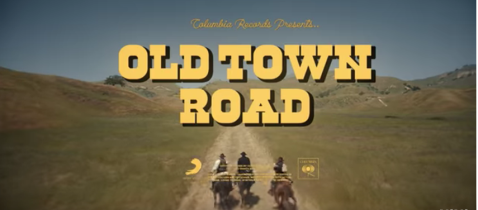

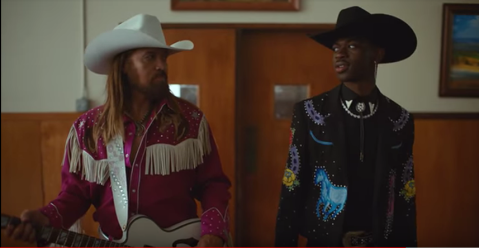


















Recent Comments